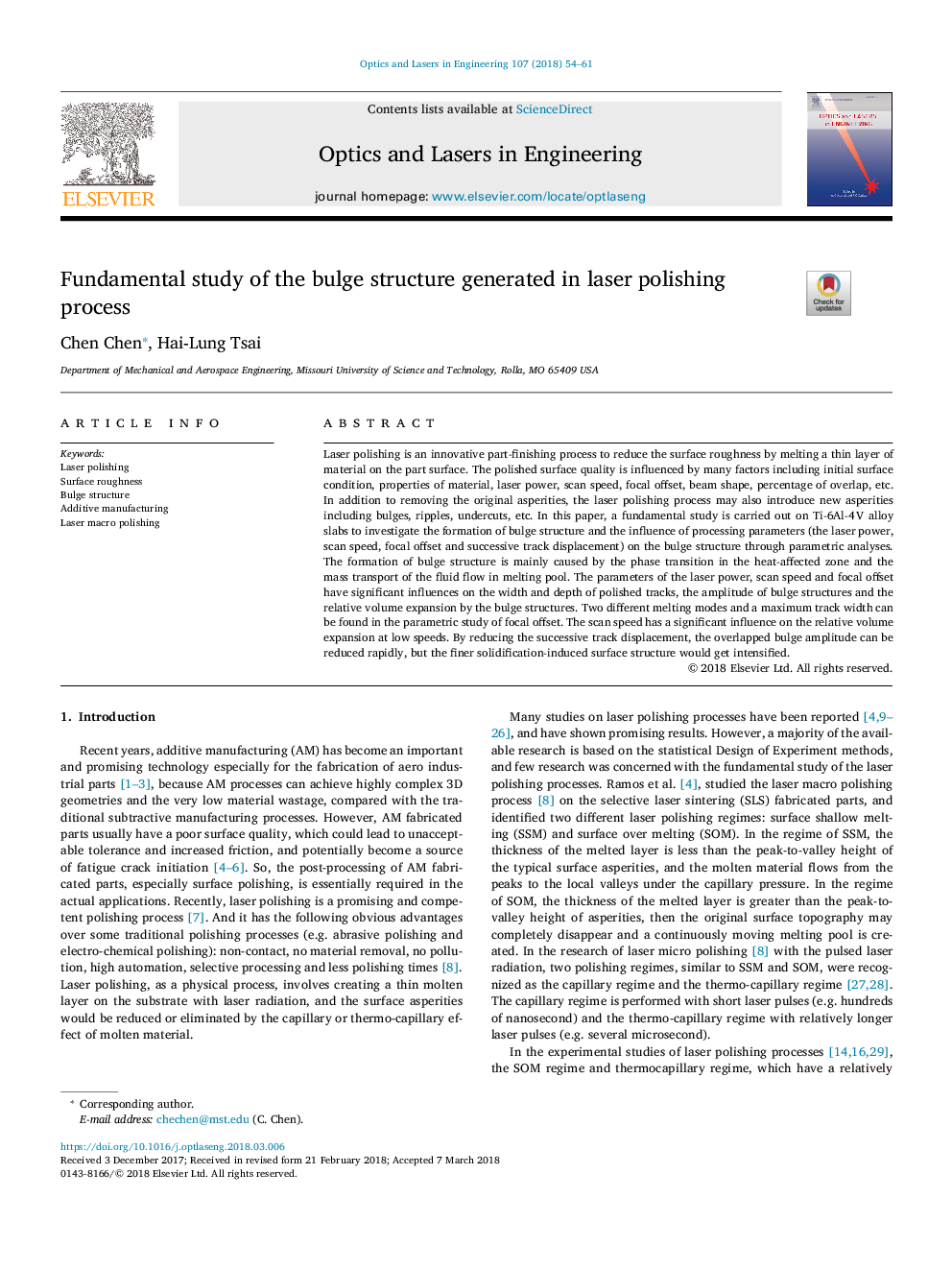| Article ID | Journal | Published Year | Pages | File Type |
|---|---|---|---|---|
| 7131667 | Optics and Lasers in Engineering | 2018 | 8 Pages |
Abstract
Laser polishing is an innovative part-finishing process to reduce the surface roughness by melting a thin layer of material on the part surface. The polished surface quality is influenced by many factors including initial surface condition, properties of material, laser power, scan speed, focal offset, beam shape, percentage of overlap, etc. In addition to removing the original asperities, the laser polishing process may also introduce new asperities including bulges, ripples, undercuts, etc. In this paper, a fundamental study is carried out on Ti-6Al-4â¯V alloy slabs to investigate the formation of bulge structure and the influence of processing parameters (the laser power, scan speed, focal offset and successive track displacement) on the bulge structure through parametric analyses. The formation of bulge structure is mainly caused by the phase transition in the heat-affected zone and the mass transport of the fluid flow in melting pool. The parameters of the laser power, scan speed and focal offset have significant influences on the width and depth of polished tracks, the amplitude of bulge structures and the relative volume expansion by the bulge structures. Two different melting modes and a maximum track width can be found in the parametric study of focal offset. The scan speed has a significant influence on the relative volume expansion at low speeds. By reducing the successive track displacement, the overlapped bulge amplitude can be reduced rapidly, but the finer solidification-induced surface structure would get intensified.
Related Topics
Physical Sciences and Engineering
Engineering
Electrical and Electronic Engineering
Authors
Chen Chen, Hai-Lung Tsai,
